Search results for 'ITS 320'
-
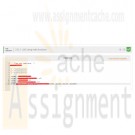
CYB/130 Week 1 Python LAB 2.32: Using math functions
Regular Price: $8.00
Special Price $3.00
CYB/130 Week 1 Python LAB 2.32: Using math functions
Given three floating-point numbers x, y, and z, output x to the power of z, x to the power of (y to the power of z), the absolute value of (x minus y), and the square root of (x to the power of z).Output each floating-point value with two digits after the decimal point, which can be achieved as follows:
print('{:.2f} {:.2f} {:.2f} {:.2f}'.format(your_value1, your_value2, your_value3, your_value4))Ex: If the input is:
Learn More
5.0
1.5
3.2
Then the output is:
172.47 361.66 3.50 13.13 -

CYB/130 Week 1 Python LAB 2.31: Expression for calories burned during workout
Regular Price: $8.00
Special Price $3.00
CYB/130 Week 1 Python LAB 2.31: Expression for calories burned during workout
The following equations estimate the calories burned when exercising (source):Women: Calories = ( (Age x 0.074) — (Weight x 0.05741) + (Heart Rate x 0.4472) — 20.4022 ) x Time / 4.184
Men: Calories = ( (Age x 0.2017) + (Weight x 0.09036) + (Heart Rate x 0.6309) — 55.0969 ) x Time / 4.184
Write a program using inputs age (years), weight (pounds), heart rate (beats per minute), and time (minutes), respectively. Output calories burned for women and men.
Output each floating-point value with two digits after the decimal point, which can be achieved as follows:
print('Men: {:.2f} calories'.format(calories_man))Ex: If the input is:
Learn More
49
155
148
60
Then the output is:
Women: 580.94 calories
Men: 891.47 calories -
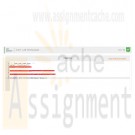
CYB/130 Week 1 Python LAB 2.30: Driving costs
Regular Price: $8.00
Special Price $3.00
CYB/130 Week 1 Python LAB 2.30: Driving costs
Driving is expensive. Write a program with a car's miles/gallon and gas dollars/gallon (both floats) as input, and output the gas cost for 20 miles, 75 miles, and 500 miles.Output each floating-point value with two digits after the decimal point, which can be achieved as follows:
print('{:.2f} {:.2f} {:.2f}'.format(your_value1, your_value2, your_value3))Ex: If the input is:
Learn More
20.0
3.1599
Then the output is:
3.16 11.85 79.00
Note: Real per-mile cost would also include maintenance and depreciation. -
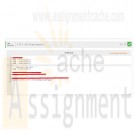
CYB/130 Week 2 Python LAB 3.14: Simple statistics
Regular Price: $8.00
Special Price $3.00
CYB/130 Week 2 Python LAB 3.14: Simple statistics
Given 4 floating-point numbers. Use a string formatting expression with conversion specifiers to output their product and their average as integers (rounded), then as floating-point numbers.Output each rounded integer using the following:
print('{:.0f}'.format(your_value))Output each floating-point value with three digits after the decimal point, which can be achieved as follows:
print('{:.3f}'.format(your_value))Ex: If the input is:
Learn More
8.3
10.4
5.0
4.8
the output is:
2072 7
2071.680 7.125 -

CYB/130 Week 2 Python LAB 3.13: Input and formatted output: House real estate summary
Regular Price: $8.00
Special Price $3.00
CYB/130 Week 2 Python LAB 3.13: Input and formatted output: House real estate summary
Sites like Zillow get input about house prices from a database and provide nice summaries for readers. Write a program with two inputs, current price and last month's price (both integers). Then, output a summary listing the price, the change since last month, and the estimated monthly mortgage computed as (current_price * 0.051) / 12.Output each floating-point value with two digits after the decimal point, which can be achieved as follows:
print('{:.2f}'.format(your_value))Ex: If the input is:
200000
210000
the output is:
This house is $200000. The change is $-10000 since last month.
The estimated monthly mortgage is $850.00.Note: Getting the precise spacing, punctuation, and newlines exactly right is a key point of this assignment. Such precision is an important part of programming.
Learn More -
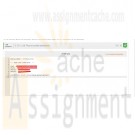
CYB/130 Week 2 Python LAB 3.12: Phone number breakdown
Regular Price: $8.00
Special Price $3.00
CYB/130 Week 2 Python LAB 3.12: Phone number breakdown
Given an integer representing a 10-digit phone number, output the area code, prefix, and line number using the format (800) 555-1212.Ex: If the input is:
8005551212
the output is:
(800) 555-1212Hint: Use % to get the desired rightmost digits. Ex: The rightmost 2 digits of 572 is gotten by 572 % 100, which is 72.
Hint: Use // to shift right by the desired amount. Ex: Shifting 572 right by 2 digits is done by 572 // 100, which yields 5. (Recall integer division discards the fraction).For simplicity, assume any part starts with a non-zero digit. So 0119998888 is not allowed.
Learn More -

CYB/130 Week 4 Python LAB 5.20: Step counter
Regular Price: $8.00
Special Price $3.00
CYB/130 Week 4 Python LAB 5.20: Step counter
A pedometer treats walking 2,000 steps as walking 1 mile. Write a program whose input is the number of steps, and whose output is the miles walked.Output each floating-point value with two digits after the decimal point, which can be achieved as follows:
print('{:.2f}'.format(your_value))Ex: If the input is:
5345
the output is:
2.67Your program must define and call the following function. The function should return the amount of miles walked.
Learn More
def steps_to_miles(user_steps) -
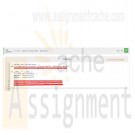
CYB/130 Week 4 Python LAB 5.19: Driving costs - functions
Regular Price: $8.00
Special Price $3.00
CYB/130 Week 4 Python LAB 5.19: Driving costs - functions
Driving is expensive. Write a program with a car's miles/gallon and gas dollars/gallon (both floats) as input, and output the gas cost for 10 miles, 50 miles, and 400 miles.Output each floating-point value with two digits after the decimal point, which can be achieved as follows:
print('{:.2f}'.format(your_value))Ex: If the input is:
20.0
3.1599
the output is:
1.58
7.90
63.20Your program must define and call the following driving_cost() function. Given input parameters driven_miles, miles_per_gallon, and dollars_per_gallon, the function returns the dollar cost to drive those miles.
Ex: If the function is called with:
50 20.0 3.1599
the function returns:
7.89975def driving_cost(driven_miles, miles_per_gallon, dollars_per_gallon)
Learn More
Your program should call the function three times to determine the gas cost for 10 miles, 50 miles, and 400 miles.
Note: This is a lab from a previous chapter that now requires the use of a function. -
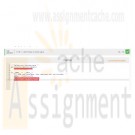
CYB/130 Week 4 Python LAB 5.18: Miles to track laps
Regular Price: $8.00
Special Price $3.00
CYB/130 Week 4 Python LAB 5.18: Miles to track laps
One lap around a standard high-school running track is exactly 0.25 miles. Write the function miles_to_laps() that takes a number of miles as an argument and returns the number of laps. Complete the program to output the number of laps.Output each floating-point value with two digits after the decimal point, which can be achieved as follows:
print('{:.2f}'.format(your_value))Ex: If the input is:
1.5
the output is:
6.00Ex: If the input is:
2.2
the output is:
8.80Your program must define and call the following function:
Learn More
def miles_to_laps(user_miles) -
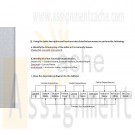
ITSE 2309 LAB 3 Normalization and Creating Tables
Regular Price: $15.00
Special Price $12.00
ITSE 2309 LAB 3 Normalization and Creating Tables
(For this Lab -there are various programs that can be used -- there is MS Excel, where by drawing boxes and using the arrows /lines option the graphics can be accomplished - there is also MS Visio, if available and the faithful – pencil/pen/ruler and paper - ( which may require the use of a scanner for submission )
1. Using the table description and business rules listed below answer or perform the following:
a. Identify the Primary Key of the table as it is currently shown.
b. Identify all of the functional dependencies.
c. Draw the dependency diagram for the table(s)
( Hint: 1NF see pages 197-198 in Database System text book)2. Normalize the relation to 3rd Normal Form (3NF).
a. List the normalized tables using the standard table notation (remember Chen and/or Crow’s foot)
- Tablename (Col1, Col2……Coln)
Primary Key:
Foreign Key:
b. Draw the dependency diagrams for each of the tables.( Hint: you should have no less than four tables)
c. Provide an E-R Diagram of the tables to be created3. Using the CREATE TABLE command, create each of the normalized tables. Run a DESCRIBE command for each table.
- Include the PRIMARY KEY constraint for each table.
- Include the FOREIGN KEY constraint for each table to which it applies.
- Include the NOT NULL constraint for Student Name and Instructor Name.
- Include the CHECK constraint for the Grade to ensure it is one of the 5 acceptable values (A, B, C, D, or F).4. Code INSERT commands to insert the data from the attached page into the tables you created in 2.
- Run 'SELECT * FROM tablename;' commands to check the contents of your tables.5. Your submittal/output to hand in should include: ( with no less than ten pages)
- Question 1, part a.: Primary Key columns
- Question 1, part b.: Dependency Diagram
- Question 2, Part a.: List of normalized table descriptions
- Question 2, Part b.: Dependency diagrams for the normalized tables
- Question 2, Part c.: E-R Diagram of the tables to be created( Chen and Crow’s feet)
- Question 2 Part d.: UML Diagrams of the tables to be created (See pages 143,144, )
- Question 3: Print out of the CREATE TABLE commands & results.
- Question 3: Print out of the DESCRIBE table commands & resulting SQL message.
- Question 4: Print out of the INSERT commands & Resulting SQL message.
- Question 4: Print out of the SELECT * FROM tablename listing and SQL results.STUDENT TABLE
Student Student Student Student Course Course Instructor Instructor Instructor Stu_Crse
ID Name Address Major ID Title ID Name Office Grade
268300458 Williams 208 Brooks CIS CIS 350 Database 301 Codd B104 A
268300458 Williams 208 Brooks CIS CIS 465 Systems Anal 451 Parsons B317 B
543291073 Baker 104 Philips Acct CIS 350 Database 301 Codd B104 C
543291073 Baker 104 Philips Acct Acc 201 Fund of Acctg. 255 Miller H310 B
543291073 Baker 104 Philips Acct Mkt 300 Into to Mktg 518 Bennett B212 A
695381127 White 208 Brooks Math Mth 202 College algebra 622 Hilbert M301 B
695381127 White 208 Brooks Math Acc 201 Fund of Acctg 255 Miller H310 ABusiness Rules:
Learn More
( see page 239 in Database Systems Text Figure 7.1)
- Only one class is taught for each course ID.
- Students may take up to 4 courses.
- Each course may have a maximum of 25 students.
- Each course is taught by only one Instructor.
- Each student may have only one major.





